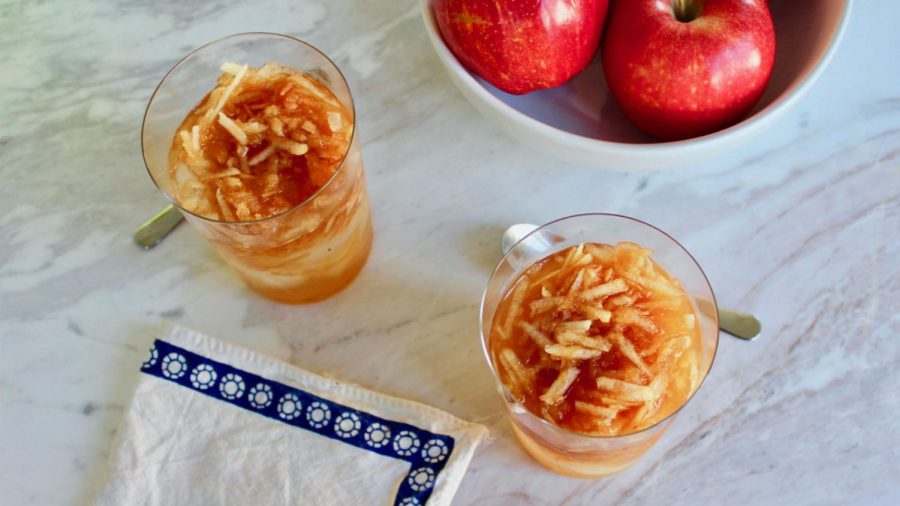This treat is the most refreshing way to break your Yom Kippur fast
Published October 3, 2022
I was born on Yom Kippur, and my mom insisted on fasting the day she gave birth. This should tell you all you need to know about my mother’s commitment to obligations of family and faith. So it should come as no surprise that for as long as I remember, despite the fact that she was fasting herself, she’d manage to prepare an elaborate Persian dinner for my family to break our Yom Kippur fast.
Between long hours at the synagogue and naps to stay alert, my mom would make big, steamy pots of basmati rice with dill and fava beans, and roasted cornish game hens strewn with dried fruit, their skin perfectly crisp, their juices fragrant with saffron and slowly caramelizing onions.
But America has its way of getting under your skin. While we loved these delicious flavors, my sister and I came to realize that our mom’s toiling was just too much, and really, after 25 hours with no food or drink, our bodies actually craved something lighter and simpler.
ADVERTISEMENT
So, these days, our Yom Kippur break fast is a classic Ashkenazi spread: bagels with cream cheese, lox, and cucumbers — all the new-to-us flavors we’ve come to embrace over our family’s four decades in the United States.
Despite our main course skewing Ashkenazi, one thing hasn’t changed. Just as my parents did with their own families in Iran as far back as they remember, the first three things we consume as soon as we get home from synagogue are pure Iranian Jewish tradition: a cup of hot black tea, a warm, comforting soft-boiled egg, and faloodeh seeb.
Somewhere between a beverage and a dessert, faloudeh seeb is a refreshing mix of shredded apples in a light rosewater syrup, served over ice. You can alternate eating spoonfuls of the apple mixture and sipping the cool, fragrant juice. It’s truly the perfect way to rejuvenate your parched and weary body.

Ingredients
- 2 medium apples
- 1½ cups ice water
- 2 Tbsp rosewater
- 2 tsp granulated sugar
- ice for serving
ADVERTISEMENT
A note on apples: As this recipe is so simple, it’s only as good as its ingredients. Fuji or Gala apples work great here, as do Jonagold, Honeycrisp, or any other crisp, sweet apple. Avoid Granny Smith apples, as they’re too sour, and Red Delicious, as they’re too mealy.
A note on rosewater: Different brands of rosewater vary wildly in their potency. Domestic brands tend to be far less fragrant than imports (typically from Lebanon — I like Cortas), so adjust the rosewater amount to taste. You’ll want the rosewater’s scent and taste to be evident, but not overpowering.
Directions
-
Add about 1½ cups ice water to a large bowl.
-
Peel one apple, grate it to the core on a box grater, and add it to the ice water, including any juices. Submerge the grated apple under the water. Repeat with the second apple.
-
Add rosewater and sugar to apple mixture; stir vigorously to combine and dissolve sugar. Taste and adjust sugar and rosewater to your liking — there should be just enough sugar to balance the rosewater, and enough rosewater to lend a fragrant note without being overpowering.
-
At this point, you can serve faloudeh seeb immediately, or store it in the refrigerator overnight. Its color will turn to a pinkish beige as it sits, but its flavors will meld together.
-
If the faloudeh seeb has been chilling for a while, at serving time, taste and adjust rosewater or sugar if necessary. To serve, add a few ice cubes to a glass, then ladle in some of the apples and some of the juice. Serve with a spoon.
















